Momentum, and urgency, continue to build for bringing together a wide range of expertise and sources of capital to fight poverty. It’s an exciting area of progress for global development and business investing in the next decade.
We heard this repeatedly from experts at the Brookings Blum Roundtable in August, and again last month during the United Nations General Assembly. Many are exploring how the U.S. can best respond to new geopolitical realities, and how the private sector can apply the U.N.’s Sustainable Development Goals through impact investing in fast-growing emerging economies.
Here is a sampling of insights from seven leaders in academia, international organizations, think tanks, business and government among the nearly fifty who participated in this year’s Roundtable.
Jane Nelson, director, Corporate Responsibility Initiative, Harvard Kennedy School of Government and nonresident fellow at the Brookings Institution; former director of the Prince of Wales International Business Leaders Forum
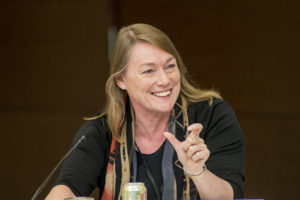 “The potential for multilateral and multi-sector approaches is enormous. It ranges from joint efforts to spread global norms and standards to scaling up blended finance and blended knowledge models.
“The potential for multilateral and multi-sector approaches is enormous. It ranges from joint efforts to spread global norms and standards to scaling up blended finance and blended knowledge models.
These collaborative approaches can play a valuable role in driving research and development, technology dissemination, and new products, services, delivery models, and value chains that are more inclusive, more sustainable, and have less carbon emissions.”
Luis Alberto Moreno, president, Inter-American Development Bank since 2005; former Colombia Ambassador to the U.S
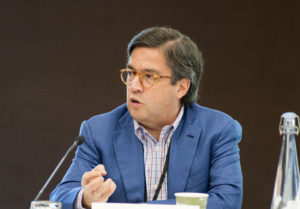 “The real value multilateral financing institutions provide is in the knowledge component about best practices; it’s about being in the frontier of development challenges.
“The real value multilateral financing institutions provide is in the knowledge component about best practices; it’s about being in the frontier of development challenges.
But equally, as we enter this deeper process of globalization…regional development banks are trusted and can provide the connectivity to support countries in their processes of economic integration.”
Sam Nunn, co-chairman, Nuclear Threat Initiative; former U.S. Senator from Georgia for 24 years
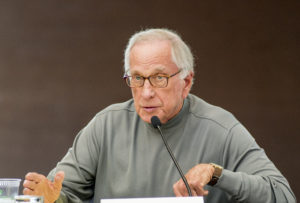 “Most of the companies that operate around the world have development funds themselves. Some of those programs are narrow and apply only to regions where those companies operate.
“Most of the companies that operate around the world have development funds themselves. Some of those programs are narrow and apply only to regions where those companies operate.
But some of them are very innovative. Some of them are very entrepreneurial. Some of them really work. They don’t get recognized, and they don’t get scaled.”
Ann Mei Chang, executive director, Lean Impact, an advisory firm for nonprofit and social enterprises; former chief innovation officer and executive director of the U.S. Global Development Lab at USAID.
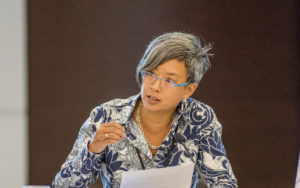 “We should build on existing successes to expand the development tool chest to systematize and simplify catalytic and hybrid funding across a much broader range of purposes.”
“We should build on existing successes to expand the development tool chest to systematize and simplify catalytic and hybrid funding across a much broader range of purposes.”
Rob Mosbacher, chairman, Mosbacher Energy Company; former president and CEO of the Overseas Private Investment Corporation

“We need to not only build a much more robust development finance corporation, but we also need to inject a few elements that are not typical of U.S. Government agencies: entrepreneurship, technology, innovation, and agility.
And agility in governments often sounds like an oxymoron.”
John Podesta, founder and director, The Center for American Progress; former chief of staff to President Bill Clinton and counselor to President Barack Obama
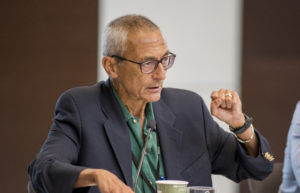 “The cause of development is more broadly owned than ever before by civil society, by the private sector, by developing country leaders, by a host of bilateral and multilateral institutions and local and international NGOs.
“The cause of development is more broadly owned than ever before by civil society, by the private sector, by developing country leaders, by a host of bilateral and multilateral institutions and local and international NGOs.
We should focus on how we galvanize the help of all of them at a time when the United Sates government looks to be sitting on the sidelines of an endeavor that it has long championed.”
Anne-Marie Slaughter, president and CEO, New America; former director of policy planning for the U.S. Department of State and dean of the Woodrow Wilson School of Public and International Affairs at Princeton University
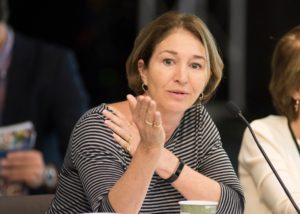 “Multilaterals have the power to leverage the kind of knowledge and finance together that we need in order to deliver on the Sustainable Development Goals.
“Multilaterals have the power to leverage the kind of knowledge and finance together that we need in order to deliver on the Sustainable Development Goals.
They also have the ability to bring together many other key network actors, such as governors, mayors, CEOs, civic leaders, religious leaders, and university presidents—all of whom have essential capacities to achieve those goals.
So, we should evaluate how multilateral institutions can be better organized and staffed to carry out these functions, because right now they are not really very fit for purpose, but they are vital.”
** **
Notes:
The U.N. Sustainable Development Goals, as Financial Times columnist Gillian Tett explains, are “17 specific targets covering a range of issues from climate change and inequality to education and gender rights,” with the aim to achieve all by 2030.
Impact investing is defined by the Global Impact Investing Network as investments made in companies, organizations and funds with the goal to deliver environmental and social benefits along with financial returns.
** **
Photo credits: Alex Irvin
Photo montage at top courtesy of Brookings Institution
To learn more about blended finance, see this analysis on pages 83-87 in a new report, Financing the UN Development System, by Homi Kharas, co-director in the Global Economy and Development program at Brookings
To learn more about an annual $12 trillion opportunity for business savings and revenue through impact investing and global development, see this commentary by Arif Naqvi, founder and group chief executive of The Abraaj Group and founding commissioner of the U.N.’s Business and Sustainable Development Commission.
Go here to read the full summary report on the 2017 Brookings Blum Roundtable


Leave a Reply